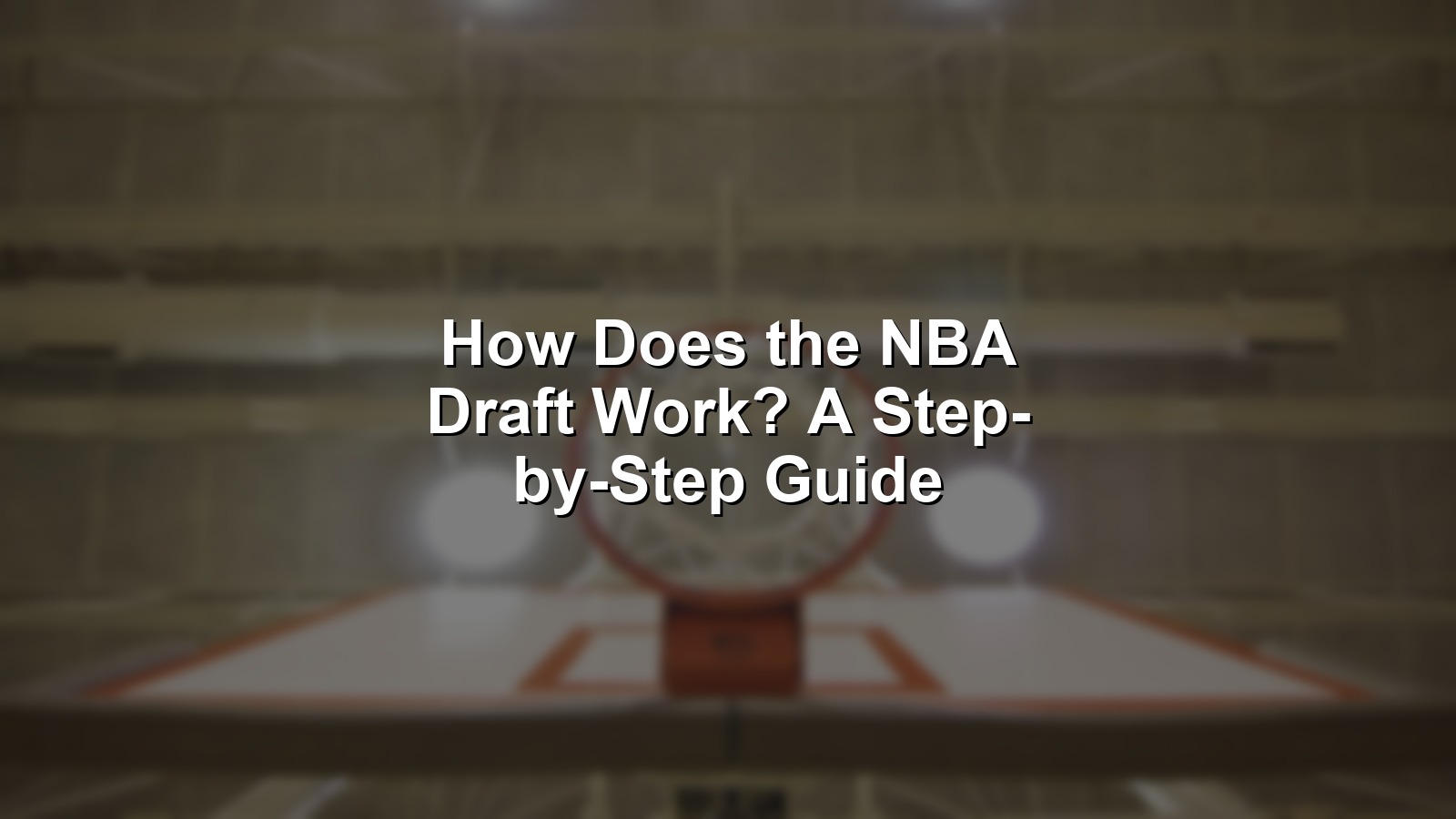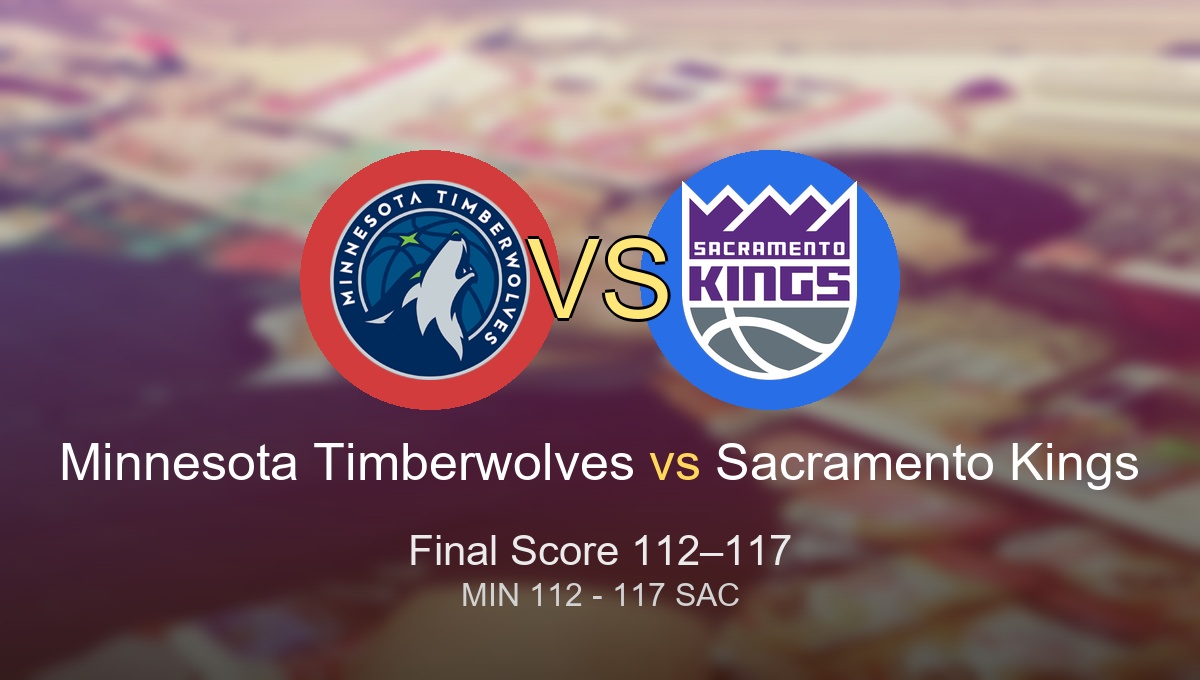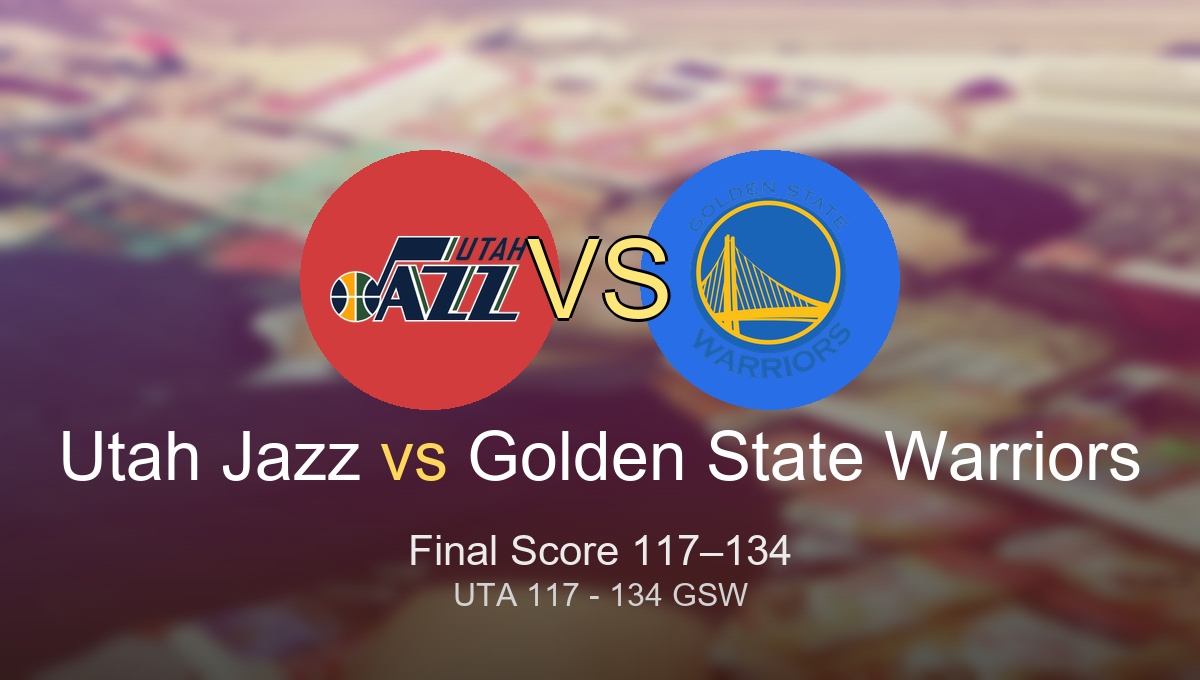
Every June, the NBA gathers the world’s top young basketball talent and reshapes the league’s future—all in one night. The NBA Draft doesn’t just make dreams come true; it shifts championship windows, turns underdogs into contenders, and gives struggling teams the promise of a brighter tomorrow. That’s why “how does the NBA draft work” isn’t just a rules question—it’s a story that changes every franchise.
Understanding the NBA Draft is crucial if you want to make sense of team strategy, blockbuster trades, and why some rebuilding plans spin gold while others leave fans waiting for another year. This is the event where legends are born, and front offices either cement reputations or scramble for answers.
Let’s break down the drama, the strategy, and the intricate sequence of steps that make the NBA Draft a spectacle—and a turning point for the entire sport.
Context: Why This Matters
Walk into any sports bar or jump into a hoops Twitter thread in the weeks before the draft, and you’ll find heated debates about what matters most: picking the “best talent,” instead of a player who just fits a team’s system. Some chase the next LeBron; others talk about rings, flexibility, and future assets.
For many franchises, the draft is the only route to relevance. “Tanking” for lottery odds can ignite hope—or frustration. For others, draft night is a chessboard, full of big gambles or patient, steady moves. As the story unfolds, every pick matters, and the right (or wrong) choice can echo for years.
So, how does the NBA draft work? Understanding the why behind each step is essential—because that’s where team-building dreams are made and broken.
Methodology
To lay out the NBA Draft process accurately, we combine on-court drama with off-court detail. Here’s how this 10-step guide is structured:
- Each step opens with a real or iconic NBA Draft moment or story.
- We explain the process, the key rules, and context—no jargon, just the facts behind the spectacle.
- Career impact, championships, and league influence get special attention.
- Sources include NBA.com’s Draft page, stats from Basketball-Reference.com, and historical analysis from major media consensus.
Weights by importance:
– Long-term team impact: 40%
– Player success and league relevance: 35%
– Historical influence of each draft rule/process: 25%
For even deeper research, check the official NBA Collective Bargaining Agreement, browse Basketball Reference, or follow live coverage on ESPN NBA Draft.
The 10 Moments That Shape Every NBA Draft
1. The Frozen Envelope: NBA Draft Lottery Drama
In 1985, David Stern reached into a clear plastic drum, pulled out a New York Knicks envelope, and changed both conspiracy theories and franchise fortunes forever. Patrick Ewing became a Knick, and the NBA Draft Lottery became a primetime event.
The lottery is where chance and hope collide. It determines the order for teams not in the playoffs, awarding the best odds to the teams with the worst regular seasons—but never guarantees them the top pick. Sliding up or down a few slots can change an entire generation of basketball in a city.
As one front office executive famously sighed, “The lottery’s a game in itself. Sometimes you win, sometimes it breaks you.” Teams, fans, and players all feel the tension.
Key facts:
– Introduced in 1985, revamped several times.
– Today, top 3 picks determined by lottery among 14 non-playoff teams.
– Odds weighted but not guaranteed for worst records.
– “Lottery luck” often shapes headlines and future champions.
Authoritative sources: NBA Draft Lottery history – NBA.com, Lottery odds and system – Basketball-Reference
🧵 On X
https://x.com/search?q=NBA%20Draft%20Lottery&src=typed_query
2. Draft Combine: Where Futures Rise and Fall
The 2013 Combine in Chicago. Victor Oladipo’s 42-inch vertical leap raised eyebrows, but it was his poise and interviews that rocketed him up draft boards. For others, a poor wingspan or a shaky jumper can mean millions lost.
The Draft Combine is where athletic numbers meet psychological testing. Teams gather data—jumping, sprinting, agility, medicals, and interviews—to decide who fits and who doesn’t. Sometimes, a single performance flips a player from late first-rounder to the lottery.
As an agent once said, “The combine doesn’t always find superstars, but it sure finds the unprepared.”
Key facts:
– Started in the 1980s, now a must-attend event.
– Tests: vertical leap, three-quarter sprint, medicals, interviews.
– Results can drastically affect player draft positions.
Authoritative sources: NBA Combine info – NBA.com, Combine measurements – ESPN
🧵 On X
https://x.com/search?q=NBA%20Draft%20Combine&src=typed_query
3. Early Entrants & Withdrawals: The Waiting Game
In 2022, Jaden Ivey debated the leap. Should he declare for the draft, or wait another year in college? That annual decision reverberates for dozens of underclassmen and international players. And sometimes, withdrawal becomes the smart move.
Players must declare as “early entrants.” Many test the waters, get feedback, and choose to stay or withdraw before the deadline. It’s a measured gamble—a misstep can mean lost eligibility, but a savvy exit often leads to a better draft slot later.
As one college coach put it, “Timing is everything. Sometimes, waiting is the win.”
Key facts:
– Declaring deadline: usually April.
– Withdrawal deadline: typically 10 days after the combine.
– Players must maintain amateur status to return to school.
Authoritative sources: NBA Early Entry rules – NBA.com, NCAA draft entry process – NCAA
🧵 On X
https://x.com/search?q=NBA%20Early%20Entrants%20withdraw&src=typed_query
4. Trade Frenzy: The Woj Bomb Era
Draft night 2018. Anxious faces in Brooklyn’s Barclays Center. Suddenly, an alert: “Blockbuster trade—Luka Dončić for Trae Young, picks involved.” The entire energy shifts.
Nothing turns the draft into a page-turner like trades. Picks, players, and future assets all swap hands, sometimes before the clock even starts ticking. A “Woj Bomb” from ESPN’s Adrian Wojnarowski can scramble team plans and fan reactions in seconds.
Fans yell, “Who won the trade?” but only history decides. Sometimes, both sides walk away happy—or haunted.
Key facts:
– Draft picks are often traded years in advance.
– Trades can involve multiple teams, players, or “rights.”
– Recent tech, like virtual draft boards, speeds up chaos.
Authoritative sources: NBA trades explained – NBA.com, Real-time draft trades – ESPN Draft Tracker
🧵 On X
https://x.com/search?q=NBA%20Draft%20trades&src=typed_query
5. Announcement: Dreams Realized on the Podium
June 2014. Adam Silver steps to the microphone: “With the first pick, the Cleveland Cavaliers select Andrew Wiggins…” The crowd erupts. On the broadcast, hope fills living rooms—and sometimes tears follow.
This is the iconic image: a commissioner calling out names, hugs, caps, and cameras. Years of work meet one perfect, pulsing moment, as new players become part of NBA lore.
As Silver often says, “For these young men, it’s a moment they’ll never forget.”
Key facts:
– Announcement order determined by lottery, then standings.
– “Green room” invites for top prospects.
– Only two rounds: 60 total picks (historically sometimes adjusted).
Authoritative sources: NBA Draft format – NBA.com, Historic picks – Basketball-Reference
🧵 On X
https://x.com/search?q=NBA%20Draft%20announcements&src=typed_query
6. Rookie Contracts: The First NBA Paycheck
After Zion Williamson’s name was called in 2019, his smile was as wide as the stage. Days later, he signed a rookie-scale deal that would guarantee both his family’s security and the Pelicans’ hope.
NBA rookie contracts are set by a scale; few negotiations, just a structured system based on draft slot. This gives teams flexibility and security—no more bankrupting rookie deals, as in previous eras.
Executives love the system. “Now the draft is about basketball, not budget disasters.”
Key facts:
– Rookie scale fixed by collective bargaining.
– Contracts typically range from 2-4 years.
– Each slot has a prescribed salary (with a range for negotiation).
Authoritative sources: Rookie contract rules – NBA CBA, Current rookie-scale – RealGM
🧵 On X
https://x.com/search?q=NBA%20rookie%20contracts&src=typed_query
7. Rights and Stashes: The International Twist
June 2013: The Atlanta Hawks draft German guard Dennis Schröder, but in the second round, they choose a Croatian teenager—Luka Šamanić—who doesn’t play in the NBA for years.
“Draft-and-stash” gives teams the right to sign overseas players when they’re ready, not just immediately. That flexibility can pay massive dividends—or sometimes, it leaves prospects forgotten.
One European scout joked, “Sometimes we stash, and sometimes we forget where the key is.”
Key facts:
– Teams can hold international player rights for years.
– Many late picks never play a minute in the NBA.
– Keeps cap sheet clean, offers future flexibility.
Authoritative sources: International player rules – NBA.com, Draft rights list – Basketball-Reference
🧵 On X
https://x.com/search?q=NBA%20draft%20and%20stash&src=typed_query
8. Summer League: First Glimpse of Tomorrow
2018, Las Vegas. Trae Young launches a deep three—and misses. The next night, he hits six in a row. NBA Summer League is where rookies, undrafted hopefuls, and fringe veterans show what’s next.
Every year, Summer League provides the first true test, far from college or international play. Teams tinker with roles. Twitter erupts over every big dunk or block.
A longtime scout said, “You can’t make the team in Summer League, but you sure can lose your shot.”
Key facts:
– Held each July in Las Vegas, Salt Lake City, others.
– Not just for rookies—undrafted players, G Leaguers compete too.
– Box scores watched obsessively for breakouts and busts.
Authoritative sources: Summer League overview – NBA.com, Summer League stats – Basketball-Reference
🧵 On X
https://x.com/search?q=NBA%20Summer%20League%20rookies&src=typed_query
9. G League Assignments: The Minor League Path
- Jordan Clarkson bounces between the Lakers and their G League affiliate. In the past, that could’ve meant getting lost; today, it’s often a launchpad.
NBA teams now use the G League for young players to develop skills, adapt to the pro grind, or recover from injury. Some lottery picks play 30+ games in the “minors” before starring in the big show.
A rising guard once noted, “That helped me get ready. Real reps, real minutes, real growth.”
Key facts:
– G League teams are direct NBA affiliates.
– Rookies and two-way contracts spend time developing there.
– Some NBA standouts started in—or thrived after—a G League run.
Authoritative sources: G League info – NBA.com, Assignment rules – Wikipedia
🧵 On X
https://x.com/search?q=NBA%20G%20League%20development&src=typed_query
10. Second-Chance Success: Undrafted Stories
July 2016. Fred VanVleet sits, undrafted, watching the last pick go by. He posts, “Bet on yourself.” Within three years, he’s hoisting a Finals trophy for the Raptors.
Thousands never hear their name on draft night. But for the hungry, Summer League, two-way contracts, and overseas stints offer paths to NBA stardom. Every bench has a few undrafted gems fueling today’s league.
A Raptors fan once said: “That’s the real spirit—the grind doesn’t end at the draft.”
Key facts:
– Dozens of undrafted players make NBA rosters each year.
– Two-way contracts let them split time between NBA and G League.
– Legendary undrafted names: Ben Wallace, Udonis Haslem, Bruce Bowen.
Authoritative sources: Undrafted success stories – ESPN, Two-way contract rules – NBA.com
🧵 On X
https://x.com/search?q=NBA%20undrafted%20success&src=typed_query
What Comes Next
The NBA Draft is the league’s great reset button, blending hope, strategy, and no shortage of luck. For every first-overall pick who becomes a superstar, there’s a second-round steal or an undrafted player who breaks the mold. Understanding how the NBA draft works isn’t just about rules—it’s about possibilities and futures hanging in the balance.
Teams will always argue if it’s better to swing on “upside” or play it safe. Draft mistakes and breakthrough gambles will fuel debates on podcasts and in barbershops for years. Fans, too, live or die with the outcome, dreaming that the next pick could be “the one.”
As new CBA tweaks, global scouting, and G League Ignite programs evolve, so will the process. In a league built on change, tomorrow’s draft will always be more than just names on cards—it’s a living, breathing story.



